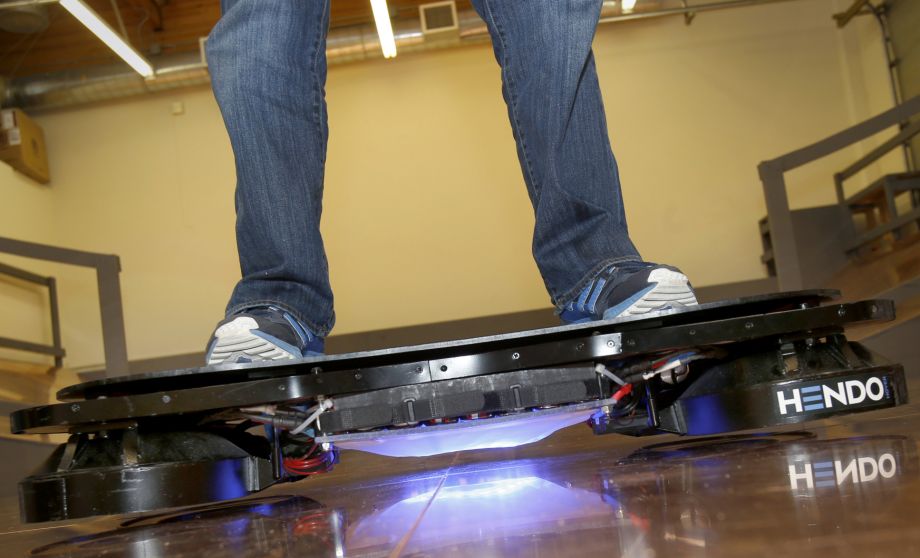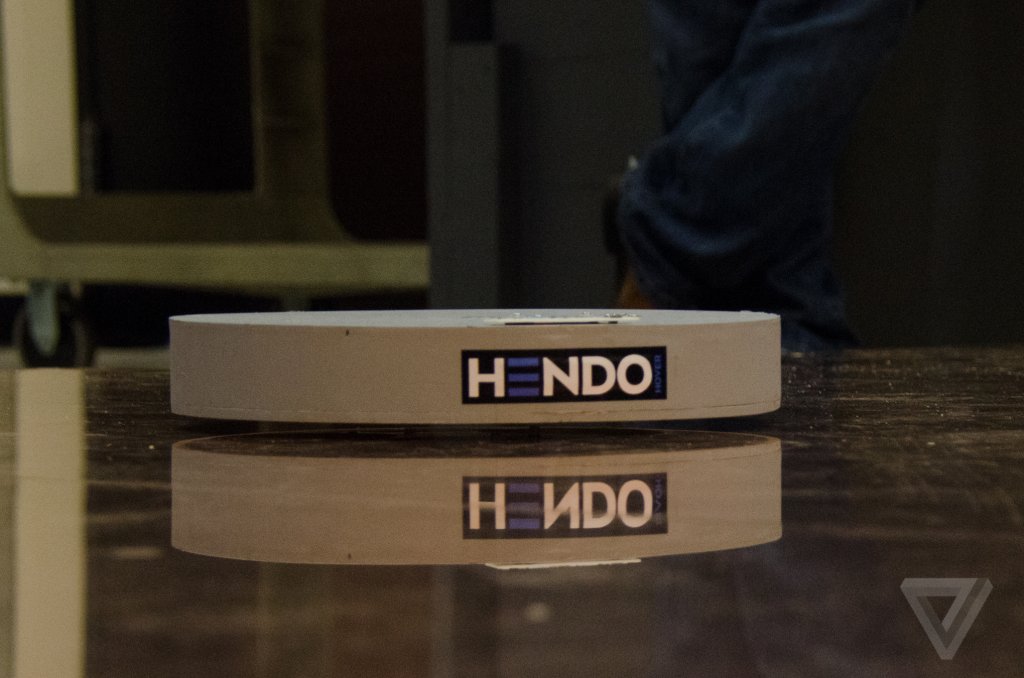

Researchers at Arx Pax have created a kind of hoverboard that allows individuals to float across metal surfaces, not unlike Marty McFly in Back to the Future. In the movie, McFly time traveled to October 21st, 2015 and saw hoverboards galore. In this respect, it seems that the future came a little early.
However, there are a few notable differences between the hoverboard that is depicted in the movie (and which McFly can use anywhere) and this newest creation. First, the Arx Pax device needs to be used on top of conductive materials (such as copper or aluminum). This is because the hoverboard does not utilize air, but electromagnetism and Lenz’s law. Essentially, this means that (at present time) the hoverboard can only be used in special research facilities that have metal floors installed.
Californian architect Greg Henderson, who founded Arx Pax with his wife, explains: “A magnet has an electromagnetic field. It is equal in all areas. It has a north and a south pole. What if you were able to take that magnet, and organize the magnetic field so that it was only on one side? And then you combine that with other magnetic fields in a way that amplifies and focuses their strength? That’s magnetic field architecture.” And when this kind of architecture is used alongside a copper floor—you get a hoverboard.
The second difference is that this hoverbaord does not soar high in the air. Rather, it hovers just a little bit above the floor. But still, hover it does. And the Hendersons have has big plans for their design, which is still just a prototype…a little more than proof of concept. They believe that the technology could be used to help keep buildings from getting destroyed in floods and earthquakes by simply lifting them into the air. They also say that it could serve as a replacement for the systems that currently levitate maglev trains.”It is very safe particularly relative to other forms of maglev,” Greg adds.
Watch it in action below (click to expand to full screen for easier viewing).
Of course, this device is still in its early, early stages. At present time, Arx Pax is trying to raise $250,000 through a Kickstarter campaign to turn this into something beyond a prototype. The company’s offering backers small engine packs so that they can use the technology to build their own creations. The Hendersons want to offer the core technology to other people who might have a clearer purpose of what to do with it (as copper roads aren’t likely coming anytime soon, and it would cost a substantial amount to refit buildings with this device).
“Our goal is inspiring co-creation with the entire community of tinkerers and makers and outside thinkers,” Greg says. “I guarantee one thing: we’re going to be surprised at the results. They’ll come up with all kinds of uses: planes, trains, automobiles, factory automation. Those are some of the easy ones. Planes may be not so obvious, but maglev assisted takeoff is something all of the big airplane manufacturers are looking at because takeoff is where all the energy is used. There’s this virtuous cycle that if you can shrink payload of fuel down, and take away all those pounds of fuel, the wings can get smaller, and then that means that we get less fuel, etc.”
That said, a patent Henderson filed for the company last March is based on putting the hover engines in the foundation of a building so that one could lift it up and out of the way of danger. Moreover, he is hoping to refine the technology and build a hoverboard park with the funds. In the Kickstarter, you can buy your own prototype…for a cool 10K. However, the money raised could enable the team to develop a hoverboard that is reliable, efficient, and not so mind-numbingly expensive in the future.
